Today, we take it for granted that if we open the refrigerator, we can enjoy a cold refreshment from it, but this was not always the case. In the past, the icemen "mined" the ice with very hard work, and then they carried the valuable product as rods around the streets of the city. The need for cooling is probably almost as old as humanity. Natural ice and snow have already been used for cooling by ancient civilisations, and these large shipments of ice have often travelled long sea voyages or overland trade routes to reach warmer, drier areas from higher mountains.
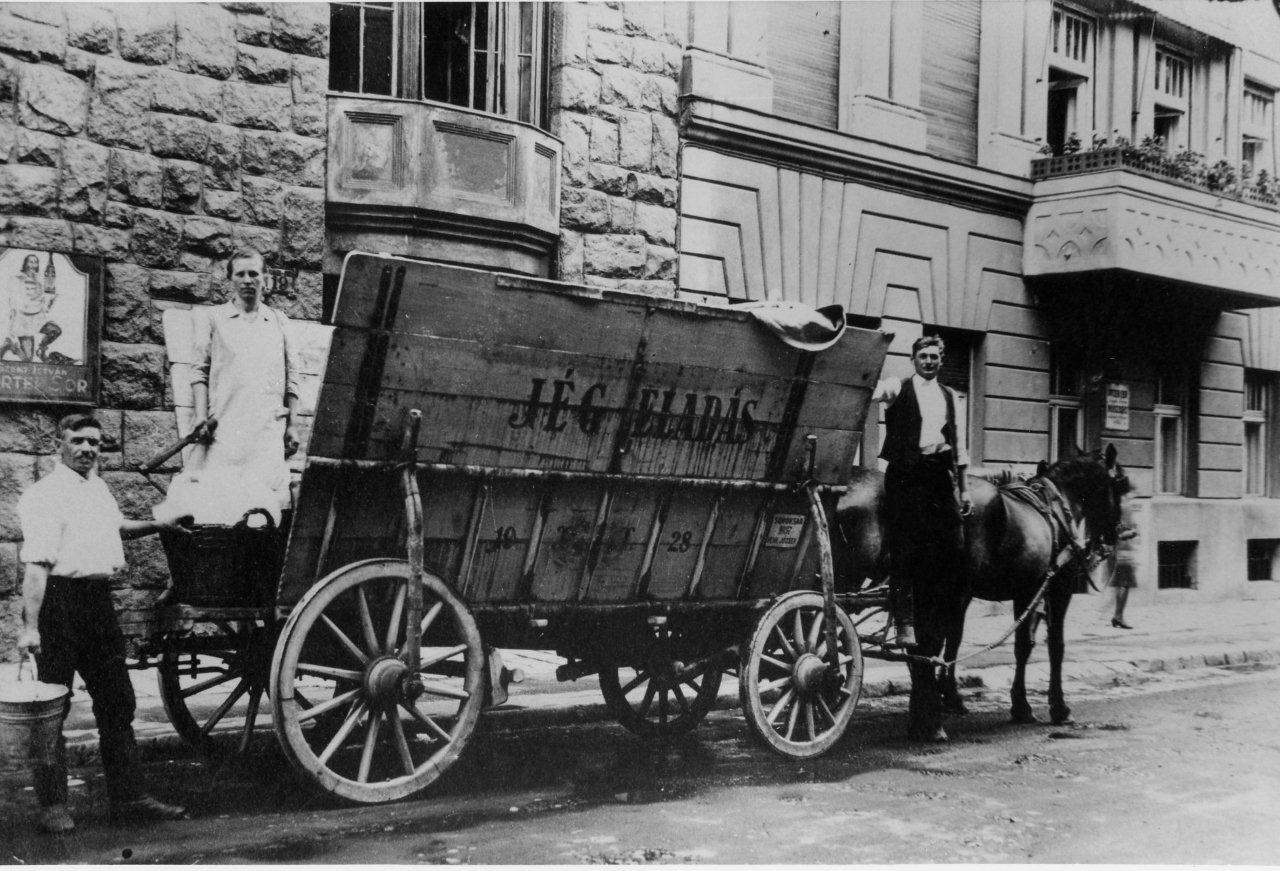
Selling ice in the 1890s (Photo: BVE Soroksári Grassalkovich Circle)
Nowadays, we are used to taking drinks and perishable food out of the refrigerator or freezer. However, since refrigerators did not appear until the 1930s, keeping perishable goods cold was a difficult task and required a separate room. These were the so-called ice stacks, in which the owners kept the most precious food and drinks.
Ice stacks appeared already in ancient times and were used in Buda and Pest until the 1930s. The ice stack was actually a wide pit dug in the ground, lined with bricks or stones, and straw. A wooden platform with a small door was built above or next to it. This pit was filled with ice, so the food was cooled in the area above and around it. The name of Jégverem Street in Buda preserves this memory to this day.
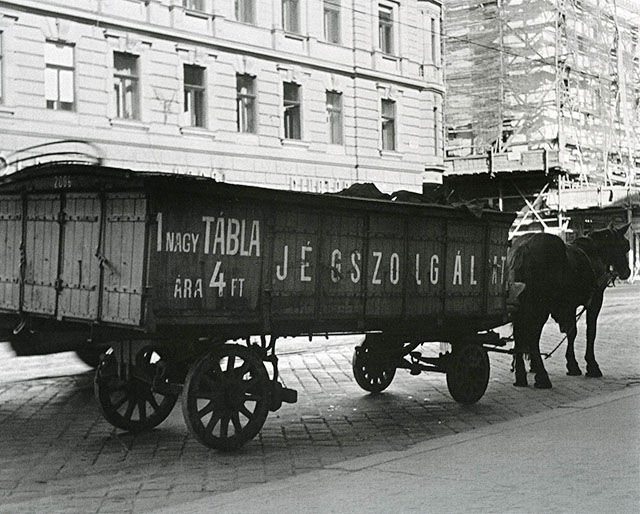
Ice service in the 1900s in Buda and Pest
Already in Turkish times, ice stacks and ice chambers often served the interests of the public good, about which Mihály Pásztor wrote in 1935: "They set up cisterns cooled with ice, and during the summer, free ice was distributed to the population from the city's public ice stack, without distinction of religion or nationality between. Marsigli says that there were separate ice-cooled water tanks next to the castle gates, from which Turks, Jews and Christians walking on the street - if they were thirsty - received ice-cooled water for free."
The ice stacks were mostly filled in the winter months with blocks of ice cut from the surrounding rivers and lakes. When the ice grew thick, they started to cut it and the icemen transported it in rods, on huge carts, and later even on trucks, since, unlike the watermen, the work of the icemen was still in demand in the 1960s.

Ice cutting from natural waters in 1941 (Photo: Fortepan/Reference No.: 76896)
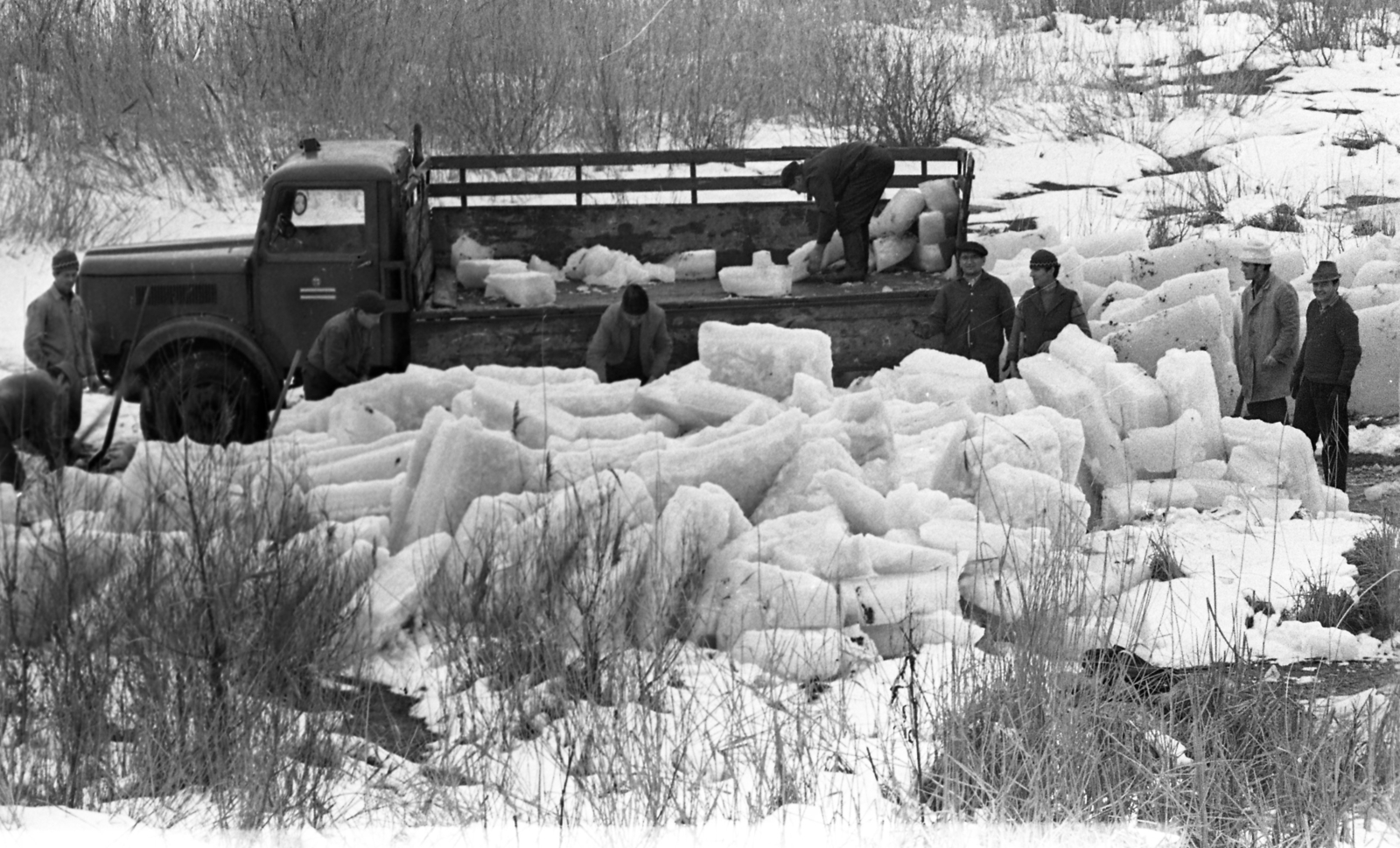
Extraction of the ice floes of the Ráckeve (Soroksár) Danube, 1970 (Photo: Fortepan/Reference No.: 87108)
The workers working in the ice cellar in Kőbánya cut the blocks of ice with a pickaxe and put them on the truck of the Ice Sales Company - 530 wagons of ice. Recorded by Tamás Fényes, 1966
The icemen busily visited both Buda and Pest, but many people stood in line for ice in the markets and larger squares as well. At the Lehel Market, even at the end of the 1950s, a significant crowd formed around the iceman.
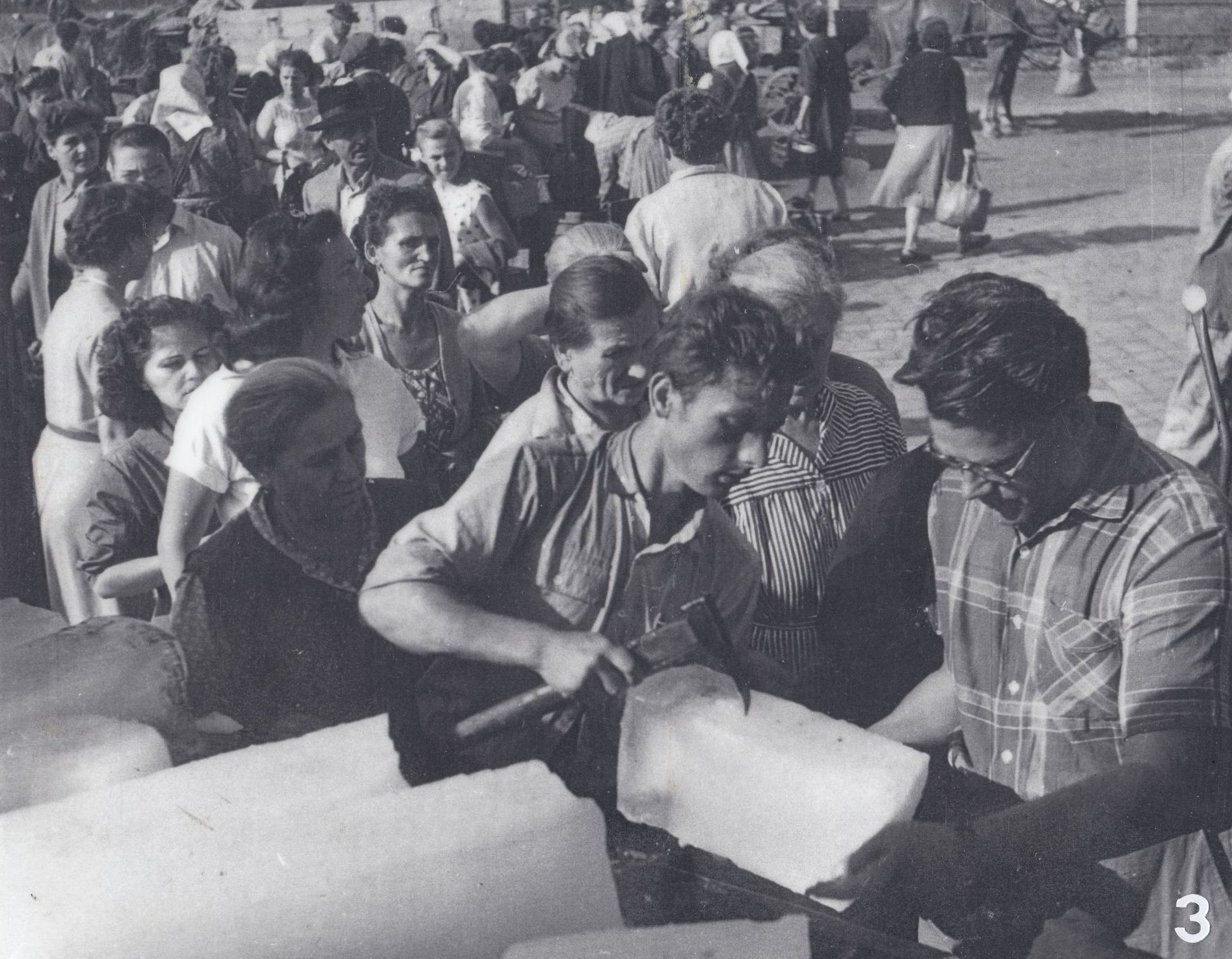
Waiting for ice at the Lehel Market in 1958 (Photo: Angyalföld Local History Collection)
Of course, people tried to be clever here as well, as the authorities repeatedly reported that a large percentage of ice sellers use faulty or broken scales, thereby deceiving customers.
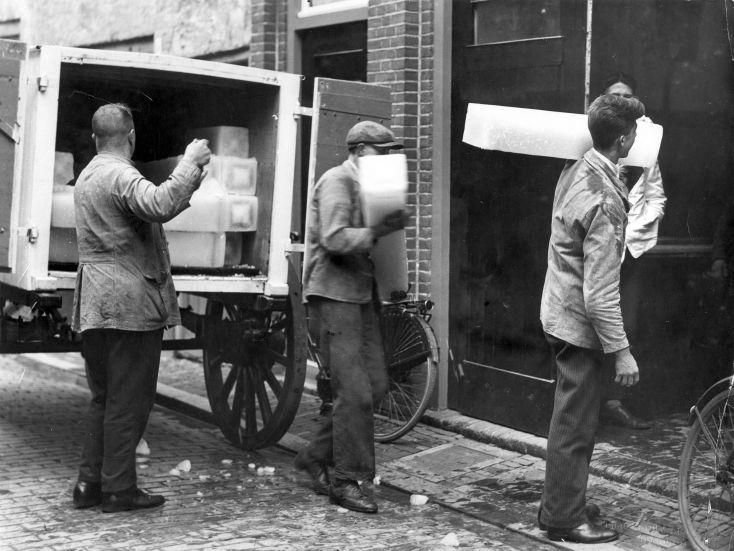
Ice transport in the 1900s
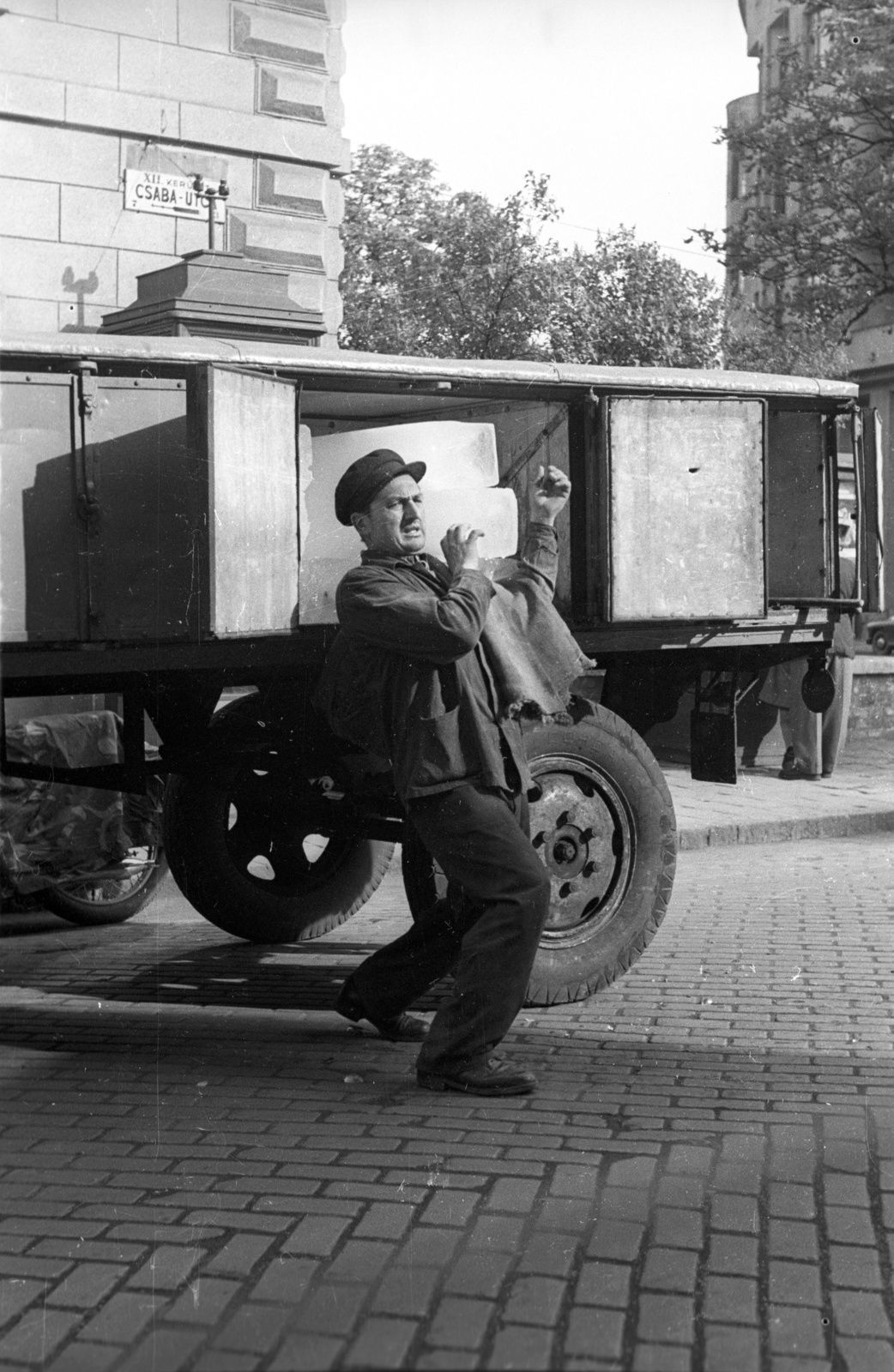
Ice delivery at the corner of Krisztina Boulevard and Csaba Street in 1957 (Photo: Fortepan/Reference No.: 117083)
Despite the fact that the ice stacks were filled with ice, they caught fire countless times, as their tops were mostly covered with reeds or dry branches. However, it was not only fire that posed a threat to the refrigerators of the time, but also various animals tried to get into the pantry countless times for a bite. An old newspaper in the late 1890s reported on one such intruder. "The other day, a fox was caught in the flower beds of one of the villas in Svábhegy, which had been nibbling on the tasty morsels kept in the ice stack of the villa owner for quite some time. Finally, they began to suspect the thief and set traps, one of which actually got the thief who paid for his recklessness with his beautiful red fur."
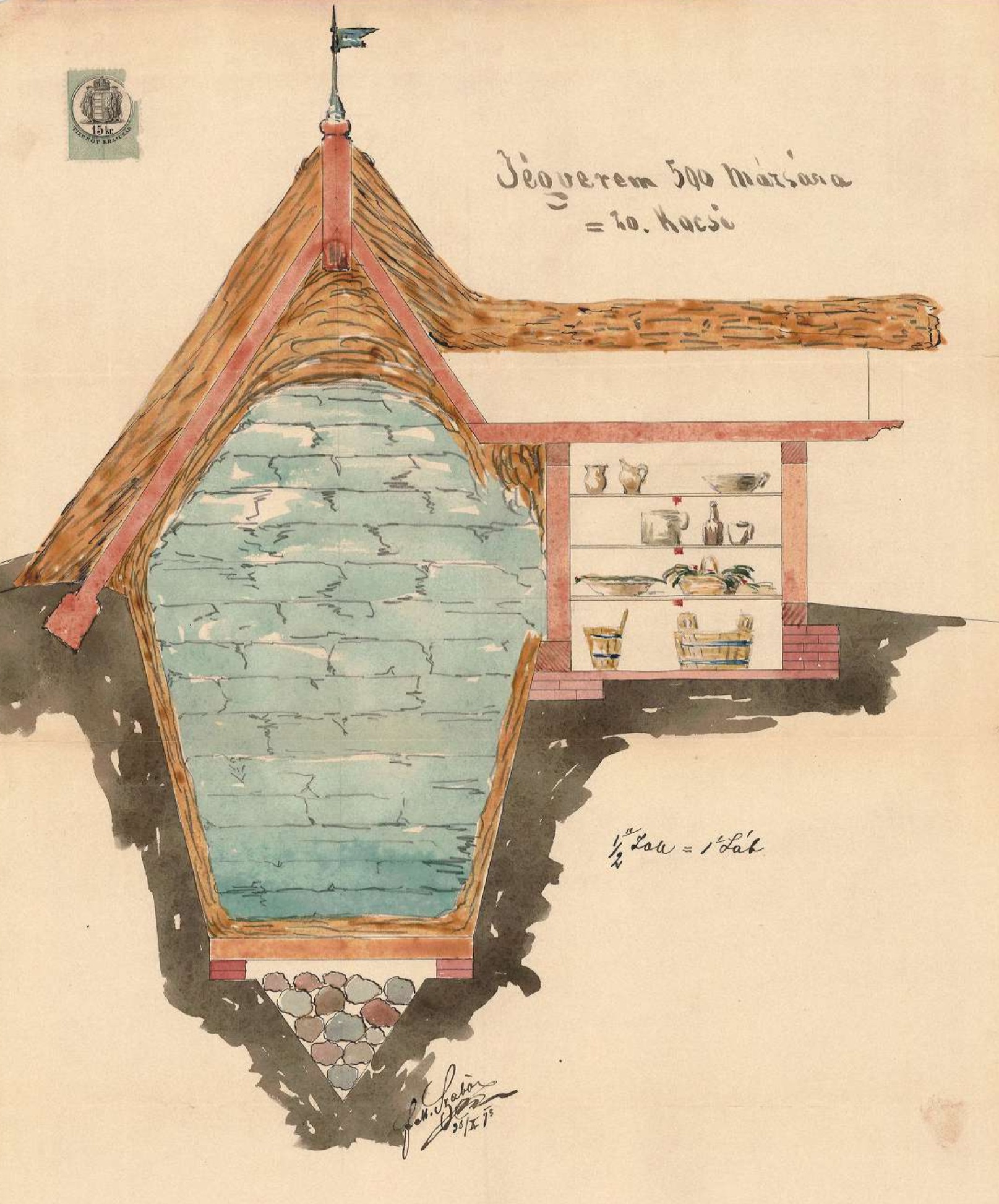
Plan of an ice stack from 1873 (Source: Hungaricana - Reference No.: HU BFL - XV.17.a.302 – 1483)
Later, entire ice factories were created with ice-making machines that produced already cut ice, so the hard physical work of cutting ice disappeared, but the icemen - who carried these bars out - remained.
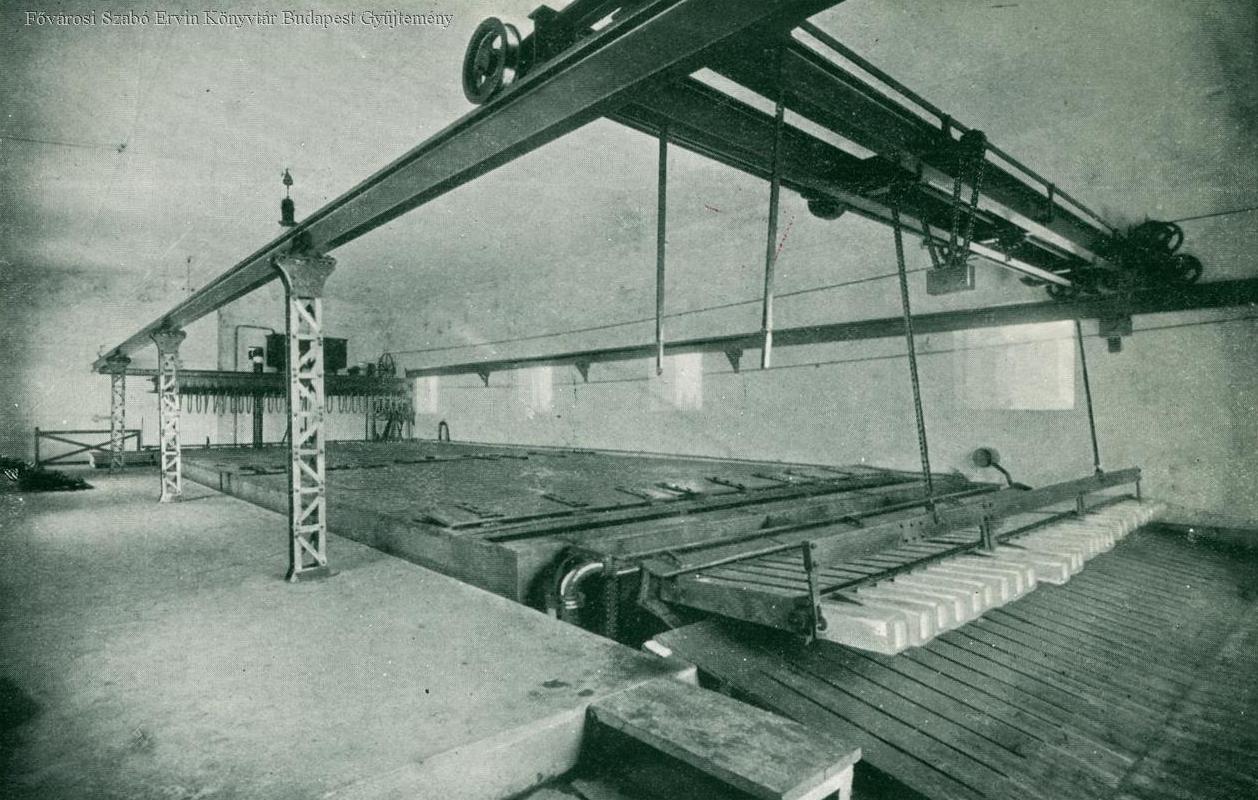
An ice factory: the refrigeration and freezing warehouse of the Hungarian Food Supply Company in the 1910s (Photo: Hungaricana – FSZEK Budapest Collection)
Even in the 1950s, one can read countless instructive stories about ice transport. One newspaper reported on why it is important to be good with ice. "Iceman! The iceman is here!... - shouts a tenor voice down in the courtyard. We shiver with cold. Outside, the thermometer shows eight degrees, inside the room, fuel has been added to the stoves again. The iceman stands on the clinker bricks of the yard as an orphan, waiting in vain for a customers. Who needs ice at this time? But hey, there is someone who needs it. Mrs. Krajcsovics toddles across the yard, a bad bag on her arm, she is the only ice buyer. My neighbour looks at her laughing and asks: - Why do you need ice in such a cold, Mrs. Krajcsovics? The old woman slyly squints, lowers her voice: "You have to think about the future as well." This good man will not forget that I bought from him at this time as well. And in the summer, when you stand in line for ice, I will always get some."

Ice truck and iceman in the mid-1970s (Photo: Fortepan/Reference No.: 77813)
Although water and ice are now available in households, let us not forget how hard our ancestors had to work so that we could live such a comfortable and water-rich life.
Cover photo: Selling ice in Soroksár in the 1940s (Photo: BVE Soroksári Grassalkovich Circle)

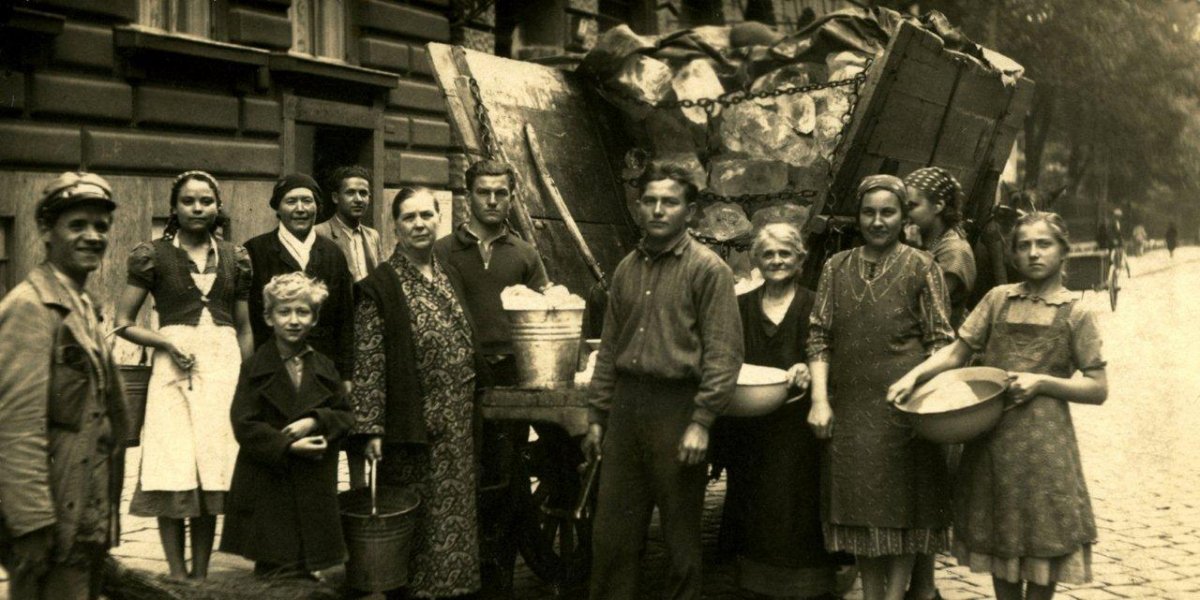


































Hozzászólások
Log in or register to comment!
Login Registration